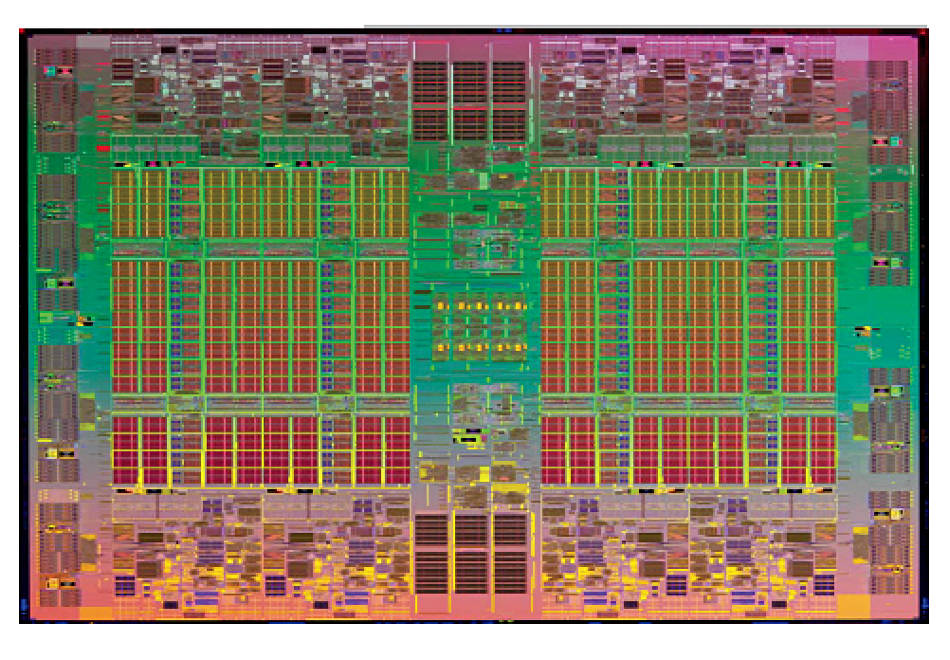hoohoo! Linus pulled a scream test and then forced the naysayers to maintain the crap they want. rofl
I’m far sadder to see the various MIPS machines starting to lose support than I am for Itanic.
I thought MIPS was making a come back
Nah. The current license holder for MIPS announced its death a couple of years ago.
RISC-V is the new hotness.
Wait I thought MIPS and RISC-V was the same ISA?
Similar, but not the same. The biggest difference of course is that the MIPS ISA is still commercially licensed while RISC-V’s ISA is open.
And good riddance. They were technological marvels, but the continuously slipping release dates made them obsolete the day they were released.
They were interesting, but only good for a very narrow purpose - not really a good thing when the trend back then was going away from special purpose machines toward general purpose.
intel didn’t plan it to be just a special purpose CPU - but it just ended up that way. That they gave their first customers free Alpha workstations for crosscompiling code as that was faster than native compilation should tell you everything you need to know about suitability of itanic as general purpose system.
I never used Itanium, but I’m guessing that the Alpha workstations also ran x86 code faster than the Itaniums. fx!32 was one of DEC’s marvels that they completely forgot to market.
Yeah, but x86 was relatively cheap. Alpha and Itanium were in a similar price range.
At that time Alpha belonged to Compaq - and they stopped Alpha development (and canned quite a few good designs which were pretty much ready to go), expecting they’ll be able to replace it with Itanium.
Were they marvels, though? Itanium made good business sense in that it would cut AMD out of the market, but it was shit technology. Itanium would have also done a good job of cutting GCC out of the compiler market, which is great news for ICC. If everybody had to buy Intel compilers, boy that would have changed the software market.
You shouldn’t be making the compiler guess at conditions-on-the-ground that the CPU should be inferring itself, such as “which data dependencies are in cache and could be running OOO right now?”. You shouldn’t be making the compiler spend instructions and memory bandwidth describing this stuff. You shouldn’t be making code that works well on exactly one generation of CPU, one pipeline design, and is trash on the next generation. Once upon a time, MIPS saved a few gates by making three “delay slots” part of the ISA, and that became an albatross as soon as they weren’t a three stage pipeline. Itanium is all about making that kind of design decision everywhere. Itanium is the Microsoft Word of ISAs, where the spec is “whatever my implementation does is the correct thing”
The immediate failure of the Itanium was the promise that “you are buying a new, more expensive system that runs your current x86 code worse”, and the expectation was that every generation of Itanium would go like that. Just as your software starts getting good, here comes the new chip that will someday make stuff faster, but you will never see that until just about the end of that product cycle.
Honestly, that fits my experience working at an itanium customer.
AMD64 completely stole their thunder.
Is anyone actually running modern Linux on Itanium? I have never in my life even heard of anyone using those chips. I find it hard to imagine anyone still using them that isn’t running something legacy.
The last chip was manufactured 3.5 years ago and the last serious user was probably several years before that. Obviously no one’s running Itanium with modern hardware.
But just because the hardware isn’t modern, doesn’t mean the software can’t be modern. Tonnes of people run the most recent Linux kernels on 15 year-old laptops, so why not 10 year-old servers? Itanium is only for the hobbyists these days, but so what? Hobbyists have done a good job of ensuring modern Linux can run on 40 year-old 68k. Itanium can theoretically be done, too. It’s just a question of whether the hobbyist community has enough of the right people that can actually maintain it.
It wouldn’t surprise me if there were still a few production Itanium systems in server rooms somewhere, running some obscure or bespoke proprietary software that can’t be migrated to anything else. There are other more arcane systems still being limped along in businesses around the world, for some frighteningly critical applications in some case.
Itanium support being dropped probably has a handful of admins panicking, but in the eyes of the kernel developers it’s a case of “put up or shut up”.
running some obscure or bespoke proprietary software that can’t be migrated to anything else
this is the primary issue – everyone looks at corporations when talking technical debt, but so many medium and small businesses are limping along on so called “enterprise” solutions they were sold a couple decades back and are now completely locked into proprietary formats for which support ended last decade
I’m a mech E in the medical field. We’re consistently understaffed. If I validate an Excel worksheet in Excel '08 or a Python program in 3.5 with a specific version of NumPy, we’re probably sticking with those versions for a while. Every time I bring up re-validating with the latest version, keeping one old system running the old software requires fewer resources than me or a colleague re-validating.
My whole department is stuck on one version of Python because that was the most recent version when I had an emergency project and developed a data analysis algorithm. We validated it, then as new members were added to my team, they needed a copy, so we had to keep using it. I’ll probably re-validate it to the next Python release. It’s not only unit tests, or we could automate validation. Unit tests are a tiny part of validating software for making medical decisions. And software that directly runs a medical device (like firmware on an insulin pump) is an order of magnitude more rigorous than what I do.
Side note: there are people who somehow root their insulin pumps and run algorithms on them. There’s a group that can get a PID control loop on an insulin pump that has a more simple control scheme on it (because that’s how the FDA approved it). The company has been trying to get approval to use PID control in the US for years.
Yeah. I know of ancient AS/400 and slightly less ancient RS/6000 systems still humming along, keeping insurance companies running.
But they probably haven’t seen software updates in decades. Linux 1.0 didn’t even exist when they were new, let alone 6.7.
The AS/400 platform is still alive and actively maintained by IBM so I’m told, although I think it goes under the Power Systems and IBM i brands now. I know several business still using them, with development teams still coding with RPG etc. Apparently there is also reasonable ecosystem of middleware to interface with more modern systems, and some sort of *nix compatibility layer to run more modern software on the platform.
I’ve never touched one myself, but they are keeping a few greybeards I know in steady work.
Costco still runs stores on AS/400. Ever wonder what those all-text terminals are all over the store?
Hobbyists, especially hobbyists in itanium are an incredibly small market share. Their time is much better spent on what people, and most importantly businesses (who pay their bills) use.
It’s still a supported architecture in Gentoo. I expect it will limp along there for as long as there is viable kernel source (current or LTS) and at least one interested maintainer. So if you have an Itanium machine lying around, you can install a current Linux on it. As long as you’re willing to follow a long set of instructions, anyway.
It seems like NetBSD is working to support Itanium. https://wiki.netbsd.org/ports/ia64/
The meta-analysis on Lobsters is also an interesting read.
Oh thank god, Lobsters is the name of the website. I was not prepared for a rabbit-hole where crustaceans were somehow relevant to a dead-end Intel ISA. I already know too much about MCS-51 because of VHS.
MCS-51
MCS-51, as in the Intel Microcontroller? I’m trying to find some link between that chip and the VHS standard, but I’m not immediately coming up with anything. From my reading, I see that some variants of the MCS-51 incorporate DSP functionality, which would make for a good analogue media device, but I’m not seeing any VHS VCRs that use one.
The same! It’s the “CPU” in the View-Master Interactive Vision. They shipped with a poorly-labeled AMD-manufactured chip that could only be an 8051 or compatible, based on its pinouts. There’s also a 9918-ish video chip, like the ColecoVision, MSX1, or TI-99/4A. The only other big chip is some kind of gate array. I’m almost certain that chip shoves code into 256 bytes of PRG-RAM for the Harvard-architecture MCU… so that Mickey Mouse can fight ghosts with a shotgun.
This is the best summary I could come up with:
Although the proposal to remove support for Intel’s infamous Itanium architecture - aka Itanic - from Linux was rebuffed in February, just weeks ago, in October, the move was approved for kernel 6.7.
To summarize the summary, when Intel began its EPIC project – no, really, it stands for Explicitly Parallel Instruction Computing [PDF] – the idea of out of order execution (OoOE) in microprocessors was new, and for x86, unproven.
In brief, the concept of OoOE is that processors can break down complex x86 instructions into smaller, RISC-like chunks, resequence them on the fly to run them as fast as possible, and then reassemble the results into the order that the software originally expected.
In 1994, it wasn’t certain that future x86 processors would be able to effectively exploit the instruction level parallelism, or ILP as HP called it [PDF], in machine code.
The Pentium Pro provided the design of the CPU core in the Centrino family of chips from Intel Haifa in Israel, which saved the company from the big, hot, and uncompetitive Netburst architecture of the P4.
The only other VLIW machine that the FOSS desk knows reached the market was Transmeta’s Crusoe – one of our articles about which, ironically, also mentioned Intel’s Fred Pollack.
The original article contains 558 words, the summary contains 209 words. Saved 63%. I’m a bot and I’m open source!
Thanks for the summarization of that summarized summary!








